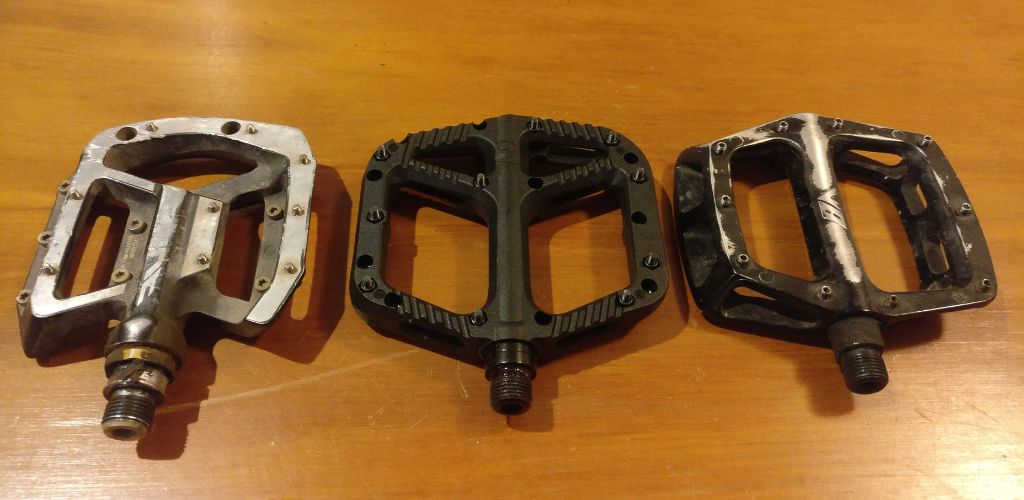Introduction to the Pedal Paradox
Have you ever wondered why high-quality mountain bikes are often sold without pedals? It’s a bit like buying a car and being told the steering wheel is extra! 😀
But in fact, there’s actually some solid reasoning behind this. Let’s dive into this pedal paradox and understand why it’s more of a feature than a bug in the world of mountain biking.
Personal Preference and Performance
Customization for Comfort and Efficiency
Mountain biking is a sport where personal preference and comfort play a huge role. Pedals, believe it or not, are incredibly personal.
The type of pedal you choose can significantly impact your riding style, comfort, and efficiency.
Mountain bikers often have strong preferences for a specific type of pedal, whether it be flat pedals for those who prefer freedom and flexibility or clipless pedals for riders who want a more secure and power-efficient connection to the bike.
Technical Specifications and Compatibility
Each pedal type has its technical specifications, including spindle size, platform size, and the mechanism (for clipless pedals). These specifications need to be compatible with the rider’s shoes, riding style, and the type of terrain they’ll be tackling.
By not including pedals, manufacturers give you the freedom to choose the perfect pedal that fits your specific needs.
Cost Considerations
Quality Over Compromise
When you’re investing in a high-end mountain bike, you expect top-notch components. Manufacturers focus their budget on the essentials like the frame, suspension, gears, and brakes.
Adding pedals would increase the overall cost, and since many riders have a preferred pedal type or already own a pair, it’s more cost-effective to leave them out.
Avoiding Unnecessary Expenses
Including a standard pedal might seem like a convenient option, but it could lead to unnecessary expenses. If the bike came with pedals that didn’t meet your preference, you’d end up buying another pair anyway. This way, you’re not paying for something you won’t use.
The Evolution of Mountain Biking
Diverse Disciplines and Requirements
Mountain biking has evolved into various disciplines like cross-country, downhill, enduro, and trail riding. Each of these disciplines has unique requirements when it comes to pedals.
For instance, cross-country riders might prefer lightweight, clipless pedals for efficiency, while some downhill riders might opt for sturdy, flat pedals bristling with shin-destroying pins for better control in rough terrain.
By not providing pedals, manufacturers acknowledge and respect the diverse needs of different mountain biking disciplines – and most importantly, the riders own preferences.
Keeping Up with Innovation
The mountain biking world is continuously evolving, with new pedal technologies and designs emerging regularly. By opting out of providing pedals, manufacturers allow you to keep up with the latest advancements and choose pedals that incorporate the newest technologies and materials.
Health and Safety Aspects
Ergonomics and Injury Prevention
The wrong type of pedal can lead to discomfort and even injuries. Factors like pedal width, grip, and the clip mechanism (in the case of clipless pedals) can affect your foot’s position, your knee alignment, and overall riding posture. By choosing your pedals, you can ensure they fit your ergonomic needs and reduce the risk of injury.
Skill Level and Learning Curve
For beginners, starting with a simple flat pedal can be a safer option, as it allows easy foot removal in tricky situations. As skills develop, riders may transition to clipless pedals. This progression is very personal, and not having pedals included with the bike allows riders to make this transition at their own pace.
Environmental and Ethical Considerations
Reducing Waste
If manufacturers included a standard pedal with every bike, many of these would end up unused and discarded, contributing to waste. By not including pedals, manufacturers are indirectly reducing waste and encouraging a more sustainable approach to consumption.
Ethical Manufacturing Practices
Pedal manufacturing involves various materials and processes. Riders who are conscious about the environmental impact or ethical standards of their gear can choose pedals from brands that align with their values.
Conclusion: Empowering the Rider’s Choice
In conclusion, not including pedals with high-quality mountain bikes is a thoughtful decision by manufacturers. (Though let’s be real, they’re not complaining about saving some money on the cost of every bike built!)
It empowers you, the rider, to make a choice based on your personal preferences, riding style, and ergonomic needs.
It’s about giving you the control to customize your bike to perfectly suit your mountain biking adventures. So, when you’re picking out your next mountain bike, remember that the lack of pedals is an invitation to tailor your ride to perfection!
Final Thoughts
Remember, the pedal you choose can transform your riding experience. Whether it’s the freedom of a flat pedal or the efficiency of a clipless system, your choice in pedals is as crucial as any other component on your mountain bike. Happy riding!

